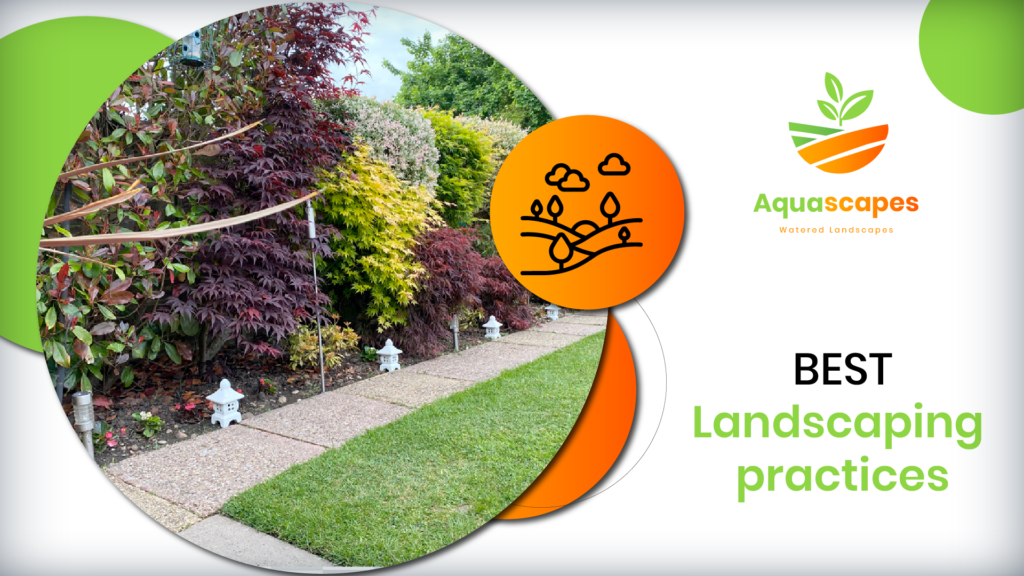BEST LANDSCAPING PRACTICES – AQUASCAPES

BEST LANDSCAPING PRACTICES
The program is focused on seven landscape principles:
– The right plant for the right place.
– Water efficiently.
– Maximize mulch and recycle organic materials.
– Fertilize efficiently.
– Manage pests.
– Protect surface water and wetlands.
– Provide for beneficial wildlife.
The “right plant, right place” motto is frequently heard in horticultural circles these days. This simply advocates matching the plant to the planting location. Consider sun exposure at the planting site and the sun/shade recommendation of the plant going there.
The same holds true for soil drainage, pH and other factors.
We also need to give serious consideration to mature plant height and mature plant spread. Many times shrubs and trees are planted too close together and become overgrown in a short time.
Watering efficiently is another yards and neighborhoods principle. We need to know the irrigation requirements of all the plants in our landscape; know the needs for our different lawn grasses. Centipede grass is less drought-tolerant than others. Water deeply and infrequently instead of watering shallowly and frequently.
Using mulch in the landscape is one of the best things we can do to suppress weed growth and replenish landscape beds with new organic material. Mulch bedding plants to a depth of 1 inch, shrubs to a depth of 2 inches and trees to a depth of 3-4 inches. Go out with mulch – do not go up with mulch. The best mulch is pine straw.
Use of Fertilizers
Fertilizing efficiently follows the watering efficiently concept. Know the nutrient requirements of all the plants in your landscape. Use slow-release fertilizers instead of quick-release and water-soluble products. Know the fertility of your native soil. Get your soil tested by taking samples to your local nursery or garden center and have them tested. Your soil may have enough nutrients present that you can reduce fertilizer use. Then apply only the fertilizer you need at the time of the year when the plant can take maximum advantage of it.
It’s tough to know where to begin managing yard pests. We need to remember that we have more beneficial insects than damaging insects. Know which is which. Insect problems include azalea lace bugs, scales, white flies, aphids, thrips and more. Scout your landscape plantings once a week to check for problem insects.
Protecting surface water and waterways involves the concept of urban stormwater. Be careful when applying fertilizers and pesticides. Do not allow these products to move into water bodies. Also, when mowing grass, do not blow leaves, grass clippings and debris into the street. Proper landscaping and lawn maintenance can help reduce these pollution problems.
We can do much in a landscape to provide for beneficial wildlife. Native plants frequently can attract wildlife. Selecting plants to attract birds to your landscape is very popular right now. Many of us are interested in attracting hummingbirds and butterflies to our gardens. Select plants for this purpose.